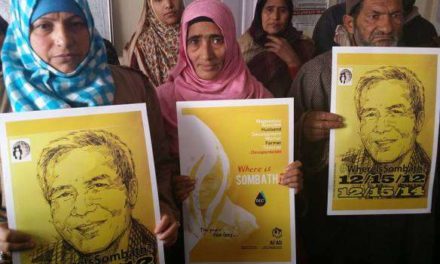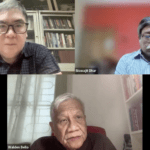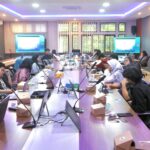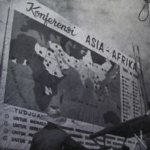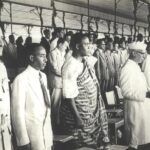Alan Fowler (Co-Founder, INTRAC and development Consultant, Manila) and
Kamal Malhotra (Co-Director, FOCUS, Bangkok)
June 1997
This discussion paper argues that, to be effective in redressing the unsustainable inequities and imbalances created by a fast globalising world, development agencies will need to form alliances within and beyond the aid system which are equitable and mutually empowering. To help this happen, a case is made for creating a new development function — an Ombudsman — whose role will be to act as a mediator, initially between non-governmental development organisations (NGDOs), when negotiating partnership issues or when significant problems arise in their relationships. The initiative would also be of use in strengthening relations between NGDOs and official aid agencies and, potentially, with the private sector.
I. THE ISSUE: REDRESSING THE INEQUITIES AND IMBALANCES WHICH ACT AGAINST SUSTAINABLE HUMAN DEVELOPMENT AND SOCIAL JUSTICE IN A GLOBALISING WORLD
Probably more than any other concept, globalisation is at the forefront of explaining and labelling what is happening to the world today. There is virtually no facet of life that cannot be placed within the framework of globalisation, its forces and its effects. International political relations; social stability; the value of money and operation of capital-based markets; environmental change; human migration; technology choices and their spread; communication and information flows; patterns of work and unemployment; disease vectors and distribution of human well-being; can and are being explained within this framework. Arguably, globalisation is the new world order (Chomsky, 1994; Kennedy, 1993; Thurow, 1996).
As a process, globalisation creates greater inter-dependency between individuals, groups, communities, societies and economies throughout the world. It has been a feature of global change for centuries. However, a number of factors have coalesced to both accelerate and direct how globalisation is taking shape. First, the Soviet Union’s rapid collapse has dispelled the notion that this form of socialist community and its values are a viable socio-economic alternative to market capitalism. Moreover, this unprecedented event has produced a destabilising political fallout as the bi-polar, Cold War, frame of reference for international relations disappears, resulting both in unaccountable unilateralism and corporate transnationalism as well as leaving many illegitimate regimes more vulnerable to popular pressure for a better life. Third, technological advances, especially in communications, have greatly facilitated instantaneous access to information on a global scale which is the life blood of efficient capital markets. Unfortunately, the type of globalisation emerging from these and other factors is producing significant inequities and imbalances between the growth of economic and material benefits and the costs born by natural resources, society, cultures and people who are poor and marginalised.
Oft noted beneficial effects of the economic consequences of globalisation are for example, greater efficiency in resource use accompanied by wide-spread steady, low inflation growth. This perceived achievement is accelerating wealth creation, manifest in the emergence or expansion of a middle class almost everywhere. Two thirds of the world’s population are not poor, are better educated and are living longer on average. But these improvements are accompanied by widening disparities in the distribution of environmental effects, income, opportunity, material consumption and vulnerability within and between countries, which is unsustainable and destabilising (UNDP, 1996). This type of economic advance makes exponential demands on, as well as competition and struggle for control over, the same resources required for domestic requirements and external trade, such as land, minerals, genetic stock, trees, water and energy sources. Most of these resources are non-renewable. This situation is a recipe for conflict and pressure to perceive and pursue national interests in narrow self-serving economic rather than human, social, moral and generational terms (Daly and Cobb, 1990).
Examples of globalisation’s positive social effects are seen in an increased recognition, at least in the concept, of the position and rights of minorities and women’s. But the assertion of individual rights is occurring at the cost of equal regard and respect for mutual obligations, for today, for future generations and for those who are distant and different. Globalisation is also generating a structural underclass, destined for new forms of marginalisation, endemic poverty, restlessness and lawlessness. Further, a growing sense of alienation and moral despair pervades young people, temporarily compensated by drug abuse and anti-social behaviour. In addition, today’s type of globalisation builds pressure for homogenisation of politics, cultural expression, norms and social values, narrowing people’s aspirations while reducing interpersonal trust, depleting the stock of coping strategies which give social resilience and eroding respect for human diversity. Some groups experience such pressures as threats, provoking negative responses such as terrorism and violent religious activism or fundamentalism (Said, 1994; Huntington, 1996). These rejoinders feed intolerance and work against the perception that that difference is both stabilising and beneficial for humanity, resulting in racial or ethnic violence and other types of clash and persecution.
Finally, gains are being made by people in claiming space for political expression and enhanced accountability of and citizens’ control over governments. Unfortunately, these same governments are less and less able to effectively govern the public domain because a combination of structural adjustment programmes and growing corporate power over the selection, interpretation and application of public choices and policies exceeds that of political institutions which are influenced and controlled in the process (Rosenau, 1990; Korten, 1995). Moreover, despite, or because of enhanced access to information, there is a reduced capacity for social and political institutions at all levels to understand and deal with the complexity of contemporary issues in order to justly mediate between and govern contending interests and claims – the United Nations being a vivid illustration (Urquhart and Childers, 1990; NGLS, 1996). In short, economic gains are becoming disproportionately offset by costs in achieving meaningful, democratic forms of governance.
These and other imbalances between the benefits and costs of globalisation already exist, but their dis-functional interplay for human well-being and survival is intensifying. The vital issue for development institutions concerned about the quality and viability of economic growth and people’s security and control over their lives is what can be done to redress this trend?
II. SATISFYING THE NEED FOR EFFECTIVE DEVELOPMENT ALLIANCES
The speed and complexity of the forces driving the adverse effects of globalisation at all its levels cannot be addressed or redressed by any one institution wherever located. This realisation is not new to the aid system and, over the past fifteen years or so, the concept of and need for ‘partnership’ between diverse development agencies has been high on their agenda. Ideally, partnerships bring together and effectively combine the diverse authority, power, competencies and levels of action needed for structural change in the factors generating and perpetuating the imbalances sketched above, as well as mitigating their short-term effects.
Over the years one can observe modification to the partnership idea and its actors. In the seventies forming partnerships was principally concerned with the quality of relations between Southern and Northern NGDOs. In the eighties, official aid agencies – both bi and multi-lateral — came into the partner mix, to be followed by a search for tri-lateral partnerships between government, NGDOs and businesses to co-operate in development initiatives funded by international aid. More recently, the notion of multi-actor co-operation has altered and expanded outside of the aid system to embrace businesses and civic actors whose interests are not premised on aid agendas, finance and initiatives. This expansion has brought with it a change in terminology to ‘alliances’ for mutually re-enforcing action around issues of common concern, not aid as such.
There is no watertight, or probably very analytically useful, distinction between partnership and alliance beyond the difference that the latter appears to be more strongly associated with collaboration between organisations that are dissimilar in terms of social role, ownership and economic foundations, but have a sufficiently shared agenda and mutual strengths to make collaboration worthwhile. The emergence of local to global citizen’s alliances is a case in point (Ekins 1992; Oliviera and Tandon, 1994; Korten, 1995:298-300). A further example are environmental movements which have rationales and concerns that are not focused on aid as such. However, such movements are increasingly collaborating with aid agencies pursuing sustainable environmental policies and projects as well as with commercial business which provide environmentally friendly services and technologies such as pollution control. These diverse entities are allies in some circumstances and areas of action, but are not necessarily organisational partners or interested in becoming so.
For those that find it conceptually helpful, a tentative distinction could therefore be made between partnerships as (longer term) strategic linkages premised on mutual solidarity between organisations and alliances as (shorter term) functional ties to better reach a shared goal. Both, however, call for a degree of mutual modification in behaviour to ensure that potential organisational complementarities become actual, i.e., they generate a value added worth the effort for each party.
While this paper is concerned with forging effective alliances, the majority of evidence and experience to draw on is to be found in attempts at building partnerships, predominantly within the aid community and more specifically between NGDOs of the North and South. An assumption must therefore be made that partnerships and alliances are sufficiently similar in their characteristics, dynamics and organisational demands that the former has something to teach us about the latter.
Forming partnerships: the NGDO experience
Since the nineteen seventies, ‘partnership’ has been a guiding ideal for the type of relationship non-governmental organisations involved in international development want with each other, with the people they work for and, more recently, with other organisations committed to goals of greater equity, sustainable change and justice in the world. Achieving true partnerships, i.e., mutually enabling, interdependent interactions with shared intentions, is also a necessary but less recognised condition for justice, fairness and balanced accountability within the aid system itself.
Unfortunately, despite much effort and occasional success the desire for true partnership is still far from being realised in most of the relationships NGDOs maintain. Yet the ideal is as important as ever for NGDOs. Why? Because it offers a way of interacting which is qualitatively distinctive and more cost-effective when undertaking concerted action within and beyond civil society in response to a globalising world which is getting out of balance in so many ways.
Numerous studies identify reasons why NGDO partnerships are too seldom achieved in practice (summarised and analysed in Malhotra, 1997; and Fowler, 1997). What they show is that there is no one obstacle but a variety of, often systemic, difficulties that can occur at any time and anywhere in relational life. However, one particular feature appears to inhibit partner relations between NGDOs in the North and South and now the East. This is the problem of disparity and security in the financial means required to achieve development results and remain organisationally viable.
On the whole, northern NGDOs encounter difficulties in forming partnerships in the South and East because of an imbalance in relational power due to imbalance in resources and the unequal vulnerabilities which result. Whether wanted or not, this makes the resource rich and more secure organisation the ultimate arbitrator in its relationship with others. In other words, resource rich NGDOs are damned by the very fact that they have resources to offer, while recipient NGDOs are damned by the position they occupy in an aid system premised on resource transfer. Typically when there are relational problems northern NGDOs get cast as judge, jury and executioner, while resource poorer NGDOs in the South and East are destined to play the role of the dependent, victimised and aggrieved party. This unwanted pattern occurs too often. The common result is a debilitating dilemma with reduced effectiveness for all concerned.
Given this experience, the fast expansion of NGDO working relations with other types of development agencies — such as the multilateral development banks – suggest that the problems of forming equitable, effective relationships are set to increase. This is particularly the case given the decrease in the level of international aid and consequent need for everyone, together, to do more with less: a concern for all parties, not just NGDOs. In sum, the willingness and capacity to form effective partnerships and alliances is not an option, but a development necessity in a globalising world.
NGDOs continue to actively explore ways of overcoming weaknesses in their partnerships and alliances. Examples are: forming joint bodies to make decisions about operational (project) activities or funding; creating multi-NGDO fora to define agendas and engage in policy advocacy and lobbying; ‘reverse’ evaluations by southern NGDOs on their northern counterparts; hiring consultants to facilitate dialogue; and expanding membership in NGDO governance to include counterparts’ views. At best, success remains modest. While renewed effort must be made in these and other approaches, an alternative way of blunting the horns of the partnership dilemma used elsewhere has yet to be tried. This is to bring in a third party, i.e., an independent, competent, respected and trusted ‘person’ to act as a sort of ombudsman, adjudicator or mediator.
Relational difficulties are part and parcel of all societies. Consequently, in many areas of social interaction – between workers and corporate owners, between businesses, between warring factions within countries, between citizens and government, within families – it is common to turn to a third party (outside of the courts) to help adjudicate and mediate when irreconcilable relational problems occur. There is no reason to believe that this process would not help NGDOs as well, but it has yet to be tried.
This concept paper puts forward suggestions for a pilot initiative to learn if and under what conditions the unexplored potential of an Ombudsman function can indeed be helpful starting with, but by no means eventually limited to, relationships between NGDOs in the North and the South and East.
III. A PILOT INNOVATION: EXPLORING THE OPTION OF NGDO ARBITRATION BY AN OMBUDSMAN
Independent arbitration could, in principle, be applied to all sorts of relationships NGDOs maintain: with official aid agencies, with governments and so on. However, it seems sensible to start with interactions between Northern NGDOs and their counterparts in the South and East as these appear to be a primary source of discomfort, aggravation and reduced effectiveness within the international NGDO community.
When can an Ombudsman be of use?
There are two types of situation where an Ombudsman could be of service. One is where large differences are found to exist when partnership are being explored. Another is where problems exist or emerge in ongoing relationships that are meant to be partnerships.
Forming partnerships requires an assessment of mutual compatability across many organisational dimensions. Such a process needs to highlight, understand and deal with, rather than obscure or ignore, legitimate differences. However, it is often difficult for such a process to work without value judgements being attached to differences that are weighted in favour of the more powerful. An Ombudsman function could help to ensure that dialogue reaches a balance in the rights and expectations of the parties serious about forming a partnership.
However, perhaps the most immediate and common source of demand for arbitration would be when parties in an existing relationship cannot agree on a decision, or choice, or interpretation of policy, within a previously agreed development initiative. A further instance is where there is dispute or difference about whether expectations and agreements on mutual performance or achievement have been realised. Third, arbitration could be called for where there are reasonable grounds to believe that one of the parties has not acted in accordance with their own principles, guidelines or agreements to the detriment of the other, or others (such as displaced or otherwise affected groups).
In each instance the parties involved could initiate a ‘complaint’ on which they request a third party opinion. However, reaching a formal complaint could be structured as part of a mediation process – prevention being better than cure.
Initiating a ‘complaint’
The core principle in choosing for mediation or arbitration by an Ombudsman is that the parties concerned agree to abide by the decision reached. In distinction to courts – where one party can be forced to attend — arbitration only works if the parties involved agree to the process and to adhere to the findings. This is the first problem associated with arbitration between NGDOs because if the northern NGDO does not agree then nothing happens, a situation which would just replicate a power imbalance in another setting. In the final analysis the only sanction available for non-co-operation is negative publicity and peer pressure.
There are a number of options for considering or accepting a complaint.
Option 1. An Ombudsman could accept a complaint from only one NGDO in a partnership with the other party being given an opportunity to respond, failing to do so resulting in a one-sided examination of the problem and publication of a ‘finding’ pointing out the lack of co-operation.
Option 2. An Ombudsman would only accept a complaint if both parties agree to its submission. This would allow each case to be considered on its merits without committing the NGDOs to arbitration as a right for all their partners.
Option 3. An Ombudsman would only accept a complaint if the NGDOs concerned have adopted arbitration as a prior policy. In other words, the NGDOs must already be committed to the principle of independent adjudication in their dealings. This would give a basic right for any partner to ask for arbitration.
While option 3 would be preferred, a pilot initiative would probably have to rely on option 2. However, option 1 would probably be necessary as well in order to test how far abuse is likely and to avoid the charge of an arbitration system simply replicating the relative disadvantages already faced by southern and eastern NGDOs.
Whatever the options used, there may need to be a threshold or penalty accompanied by clear guidelines to guard against frivolous or simply malevolent complaints. While this would have to be worked out in detail as part of the pilot design, one requirement would be for applicants to prepare a well documented submission. Recognising that this might work against very weak NGDOs, the threshold could be reduced by making resources available to document the case in detail and external support allowed if there are sufficient initial grounds for doing so. Another approach could be to charge (a flexible amount) for rejection if the grounds were found to be frivolous or perverse.
Whatever the option(s) adopted, the value of an Ombudsman depends on whether or not he, she or they enjoy the confidence of all concerned – which means the person(s)/set-up must be seen to be both impartial and competent.
An NGDO Ombudsman in practice
To be trusted in a role of mediator or adjudicator requires a truly independent, autonomous position and recognised competence in understanding the issues involved. Each poses problems in an NGDO setting with a number of possibilities for their solution.
Preconditions: NGDO understanding and acceptance
Probably the most important precondition to be satisfied before an Ombudsman could work would be the widespread acceptance of the idea in the South, East and North. A large amount of energy would need to be put into the consultations required to obtain information from existing mediating systems, explain the idea to the envisaged constituencies, gather feedback and then share, step by step, a proposal for how the function could be made operational. Depending on the geographic scope of the experiment a steering group representing the interests of key parties could be created to guide the process.
Competence and trust: the issue of staffing
The most likely source of a trusted Ombudsman is a respected observer/academic/retired NGO leader who is known to and knows about NGDOs and the development system in the North and South. In other words, the prerequisite is that the individuals concerned have sufficient knowledge about the field and are respected on all sides of the fence. An important part of a pilot exercise would be to solicit for and gather names of potential Ombudsmen and women and then, after extensive consultation, use a panel to screen them for acceptability and then test those that are acceptable in experimental practice.
Technical staff who would process submissions could come from both NGDO and academic circles, but an emphasis would need to be placed on inter-personal and facilitative skills as well as analytic capabilities.
In order to keep the function lean and cost-effective, a number of people designated as Ombudsmen could be identified who are not full time staff members but are allocated – case by case — a dialogue or complaint to deal with under the ultimate responsibility of the Ombudsman’s office. To keep the process participatory, names of potential candidates could be proposed for the parties to select from. Even in this set-up, it will be necessary ensure that all designated individuals are trained in and agree to be subject to a common set of guiding principles in fulfilling their role.
Independence and autonomy #1: the issue of financing
The independence and autonomy of an Ombudsman function is crucially determined by how it is resourced. Where both parties can bear the cost of the adjudication process matters are straight forward. The costs are simply split between them. In many instances, the nature of North-South-East NGDO imbalances makes this possibility unlikely. To ensure initial autonomy the financing options might be:
Option 1 One-off grant from a mix of (northern and southern) donors who would not use the Ombudsman service. Complaints accepted for adjudication might be charged a nominal sum (related to ability to pay) as part of a threshold and cost sharing with the perspective of future sustainability.
Option 2. Grant from a donor who could ‘draw down’ on the amount provided to a maximum which matches the costs of complaints bought by their partners.
Option 3. NGDOs bringing a complaint meet the costs in proportion to an ability to pay.
Option 4. Costs are recovered proportionally based on the findings of the complaint.
Option 5. Although not likely for a pilot exercise, a trust fund or endowment would be the ideal way to preserve neutrality and sustainability.
In an experimental phase, option 1 is really the only viable alternative to test the idea, but other options could be introduced as a part of the experiment.
Independence and autonomy #2: the issue of governance
The Ombudsman would need a governance structure that brought together the interests of NGDOs in the North, South and East as well as funders. The legal structure would be determined by the country of registration. Possibilities would be to guarantee an equal number of places for representatives from NGDO umbrella bodies from North, South and East, with an equal number of places for independent individuals with knowledge of the sector and other expertise, and relevant donors. An independent member would always be Chairperson with a tie breaking extra vote.
The governors’ principal task is oversight on the criteria applied for accepting or rejecting complaints, the quality of the adjudication process and acting as the final port of call if there are allegations of unfairness or bias.
Location and initial scope
The key factor in locating an ombudsman function would be ease of communication for NGDOs, especially those in the South and East. With today’s spread of communication facilities, from a global perspective this could mean a pivotal country on any continent.
However, because partnerships are between specific NGDOs a global function would probably not be the way to go. For practical reasons it would be better to start with one region in the South or East, using the experience gained as a ‘model’ which could be tailored to other regions. A regional scope is also to be initially preferred because it can contribute to ‘neutrality’ by taking issues out of specific country contexts and pressures. For a pilot undertaking, South East Asia provides a region with a relatively high density of North-South NGDO relationships spanning all stages of existence: from the embryonic in countries such as Cambodia, Laos and Vietnam; to mature and active in the Philippines; to the separation phase arising in Thailand and Malaysia.
The pilot exercise is meant to be for learning. Methodologically, therefore, a case could be made for a comparative approach by running an Ombudsman function in two regions with distinctive differences in terms of NGDO origins and relationships. South Asia or Central America could offer such a comparison. However, while doubling the outreach, this would potentially double the size of the risk associated with a pilot exercise and the comparative learning may not provide sufficient return to justify the additional uncertainty involved.
Assessing an Ombudsman’s performance
A pilot initiative could be assessed using the following criteria.
The type and degree of seriousness of the ‘complaints’ submitted and subsequently dealt with.
The proportion of complaints resolved to the satisfaction of all parties leading to continued and improved relations.
The proportion of cases that are not resolved leading to a separation or reduced interaction which is not a partnership or alliance.
The costs of dealing with different types of cases. Is the quality-cost ratio better than existing ways of dealing with disputes (in as far as they exist on a truly mutual basis).
Identification of preferred approaches to engaging NGDOs in conciliatory dialogue.
Pilot experimentation will call for a dedicated investment in and methods for learning. Examples of how this can be done are:
follow-up and comparison of cases accepted and refused to see if there are differences in outcomes(within and perhaps between regions);
analysis and categorisation of relational problems to identify patterns and trends for which preventive measures could be proposed;
comparison of different mediation/adjudication methods in relation to the above categories – which approaches work better when?;
client evaluation and feedback on each mediation.
The potential benefits
There are a number of mainly qualitative benefits which the NGDO community, and the aid system more generally, can gain from an investment in an ombudsman function. These are:
Greater transparency, justice and fairness
A major issue clouding NGDO relations is a lack of transparency coupled to perceptions of inconsistency in how relational decisions are arrived at on the basis of whose insights and interests. An ombudsman function could help dispel these clouds. This would bring more justice into the aid system.
Increased civic strength
Experience suggests that better inter-organisational relationships make for better development. They also increase the strength of NGDOs as civic actors at and between all levels of development action. This belief stems form the notion of building social capital by increasing the variety and density of trust-based relationships in society (Putnam, 1993).
Greater cost-effectiveness
Operating on the basis of trust-based partnerships and alliances can reduce transaction costs associated with development work. This leads to gains in both efficiency and effectiveness.
Prevention rather than cure
Annual analysis of the issues an Ombudsman is asked to deal with can be used to inform NGDOs about common relational problems coupled to an assessment of mediation methods which could (potentially) be translated into preventive advice. Over the long term, when other reasons for a decrease have been discounted, one sign of the success of an ombudsman function and preventive advice could be a reduction in complaints.
CONCLUSIONS
A case has been made for testing a type of innovation found elsewhere in society as a way of enhancing relationships between agencies involved in international development; initially between NGDOs. In the first instance, the idea would help redress an imbalance in accountability between northern and southern and eastern NGDOs because of their resource differentials. In addition, it could have a positive development impact by establishing more effective inter-organisational alliances and partnerships which are better able to address the unwanted imbalances, dis-functions and inequities stemming from the acceleration of globalisation. The question arising is whether or not the NGDO community perceive this to be an innovation worth pursuing.


